The HTC One X for AT&T Review
by Brian Klug on May 1, 2012 6:00 PM EST- Posted in
- Smartphones
- Snapdragon
- HTC
- Qualcomm
- MSM8960
- Krait
- Mobile
- Tegra 3
- HTC One
- NVIDIA
The next major thing to talk about it HTC’s Sense 4. First off, all of the HTC Ones run Android 4.0.3 as of this writing, which was the first ICS build pushed to the android open source project. It isn’t 4.0.4, but that’s forgivable considering the timeframe involved. Anyhow, Sense is one of those things that traditionally has been a major point of contention for power users. The problem for an OEM crafting a theme or skin is to strike a balance between the native appearance and feel of the underlying base OS, and whatever unique customizations they’re adding.
For probably the first time, I can honestly say I think HTC has has nailed that balance with Sense 4. The platform still feels and looks ICSey, and I think that’s what made previous iterations of Sense somewhat awkward - you couldn’t adequately grasp the theme or feeling of the underlying OS. HTC has changed things like overscrolling behavior throughout the OS, as elements now spread apart like an accordion. Toggle switches and buttons also get a new theme, but it isn’t an altogether huge departure from ICS, and (as required) Holo is still lurking underneath for applications that leverage it.
Like previous iterations, Sense 4 includes a number of lock screen customizations, including the ability to launch applications or SMSes by dragging their shortcuts into the ring. Unlike the previous version, you don’t get the ability to change the lock screen shortcuts directly, instead they’re inherited from the bottom dock-like row of applications on the launcher. The launcher now includes ICS features like folders on the homescreen for organizing shortcuts, and a new widget, app, and shortcut management view.
The main launcher gives you a paginated 5x4 grid of application tiles. HTC has done similar things in the past with the bottom three tabs - all, frequent (sorted by number of launches), and new downloaded applications. There’s not much to say here other than it’s interesting how most stock launchers have returned to paginated structure instead of just a big scrollable list view. Both the launcher and main homescreens are very very smooth, thanks to the combination of ICS’s OpenGL ES 2.0 2D acceleration and MSM8960.
The other main Sense customizations include both messaging, keyboard, and the task switcher. HTC has opted to change the task switcher entirely; instead of ICS’s transparent column of recently launched applications, the HTC Sense 4 launcher is a row of full screen previews. Applications can be closed by swiping them up (hello WebOS cards…) or switched between by tapping on them.
Messaging has changed subtly since the previous version of Sense, and feels snappier. One of my complaints with Android in general has been how messaging seems to always slow down after a few weeks worth of SMSes accumulate, and so far I haven’t run into that wall. I still do think the compose box is too big and covers too much of the conversation, and the default font seems gigantic, but thankfully one can change that. The Sense 4 keyboard also feels improved, and I can type at full speed without issue. That said, I’ll never understand why OEMs continue to remove the stock keyboard entirely.
Another major design decision HTC has made is to go with the traditional USB disk drive mount option instead of MTP. I think we’ll see OEMs also go this route as the MTP connector on some platforms still leaves a lot to be desired. Sense 4 also leaves the notification shade virtually untouched - there aren’t any quick power settings or tabs, just the settings pane shortcut like stock ICS. All in all I feel like this is the new Sense 4 design language - minimalist and simple, not the self-justifying customization of every last window and view just for the sake of doing so.
Storage on the AT&T One X is 16 GB of integrated NAND. Like basically all Android phones, this is divided between an /sdcard mount point, and /data. Note that this architecture is basically required if you’re going to implement USB mass storage instead of using MTP.
shell@android:/ $ dfFilesystem Size Used Free Blksize/dev 335M 136K 335M 4096/system 1007M 895M 112M 4096/data 2G 696M 1G 4096/cache 251M 4M 247M 4096/devlog 19M 16M 3M 4096/mnt/asec 335M 0K 335M 4096/mnt/obb 335M 0K 335M 4096/firmware_radio 199M 33M 166M 4096/firmware_q6 199M 5M 193M 4096/firmware_wcnss 4M 1M 3M 2048/data/secure/data 335M 0K 335M 4096/data/DxDrm/fuse: Permission denied/mnt/sdcard 9G 1G 8G 32768
So you get 9 GB of storage for media and photos, and 2 GB for applications, which is pretty much the normal storage split I see. Like we discussed in our initial ICS piece, you can either get unified storage with MTP, or the less cumbersome mass storage mount method.
The last note is Beats Audio. HTC includes the Beats branding almost everywhere - it’s on the box, on the back of the device, on the boot splash images, and inside the OS. There’s no longer any Beats earbuds in the box, but a corresponding change in the way Beats works. The new change is that Beats now works for any headphones that you attach, instead of just Beats branded ones like previously. At some point I’m going to investigate Beats Audio integration in newer HTC devices more thoroughly, for now just know that new HTC devices give you the Beats DSP on any attached headphones. I will note that it sounds to me just like the Beats audio from the HP TouchPad, which is to say boosted bass and some dynamic range compression. I honestly prefer it off, but overall sound quality with it off is subjectively good - no background hiss or whine audible.
The rest of Sense is hardware related and involves another important consolidation - camera, which we’ll get into in the respective section.


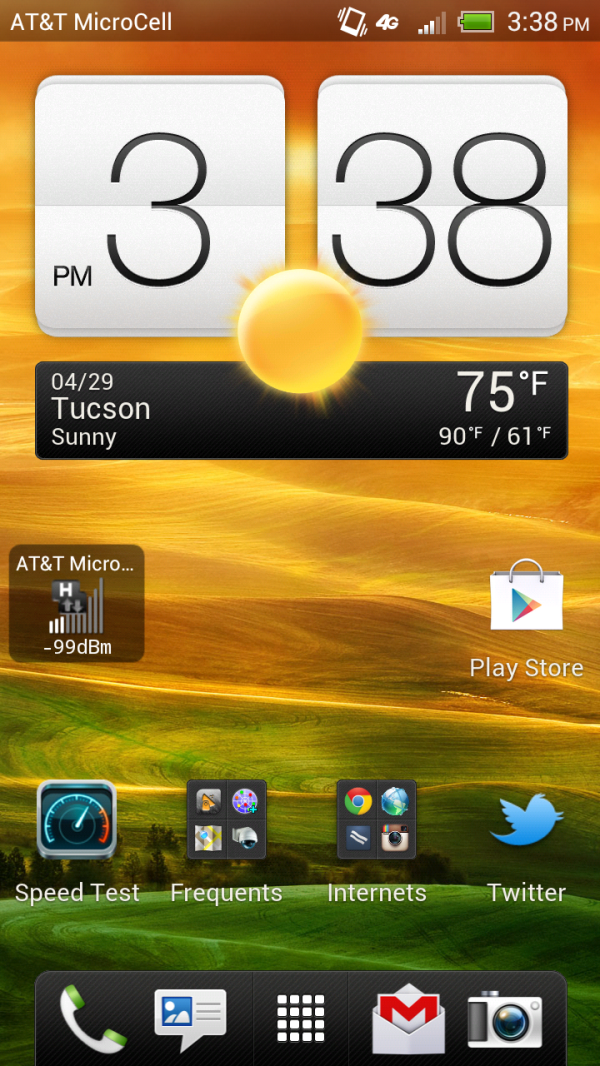
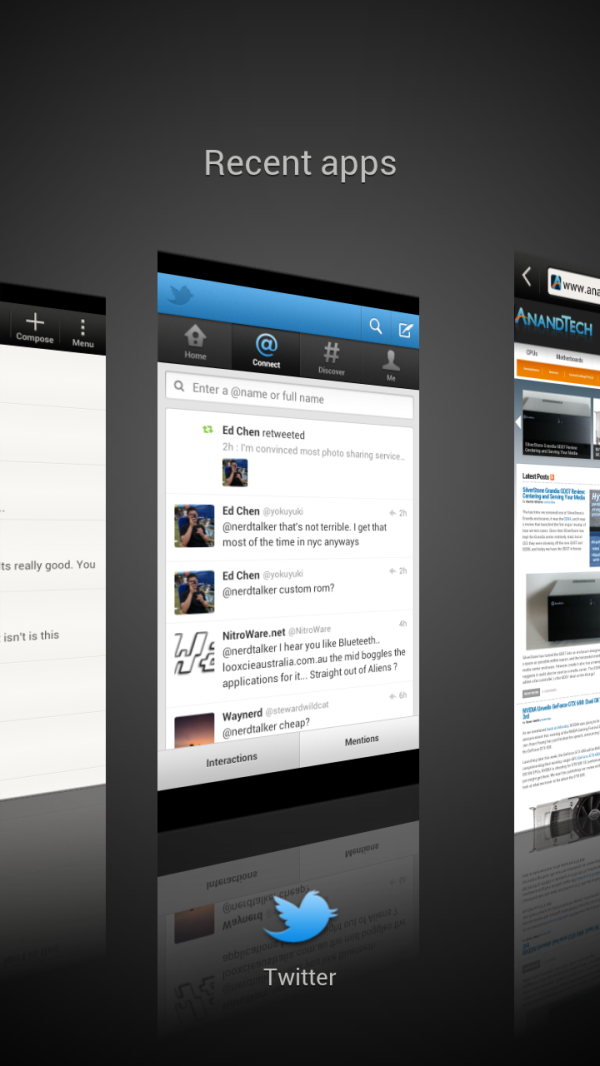
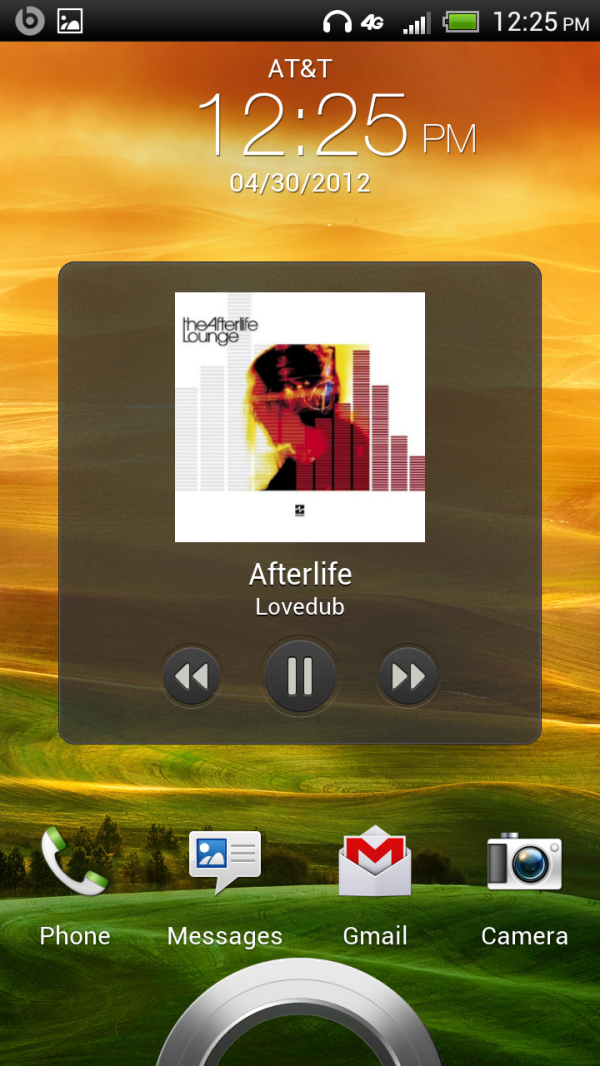
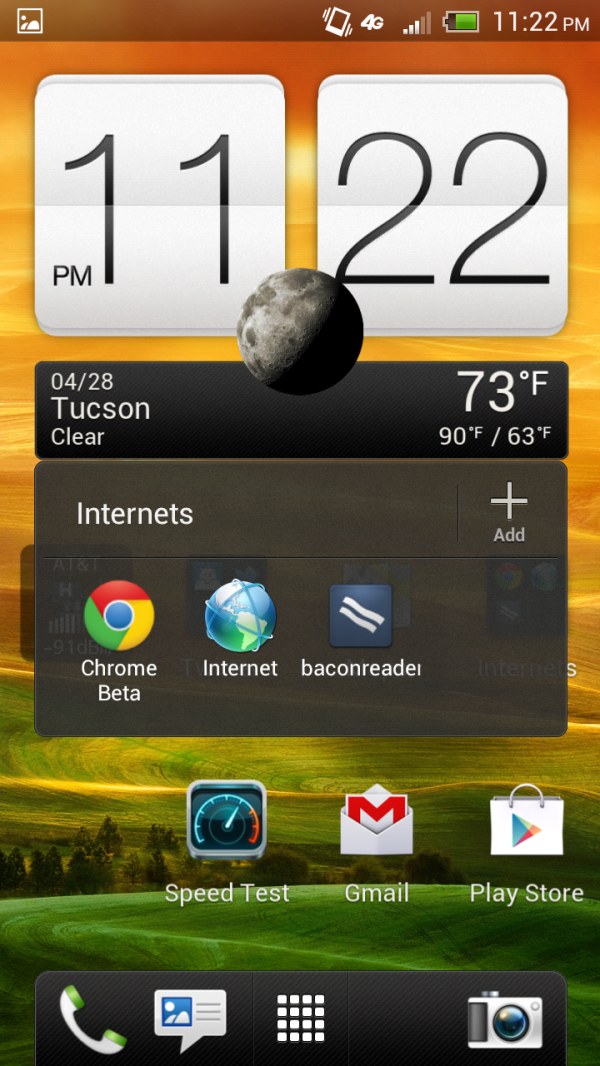
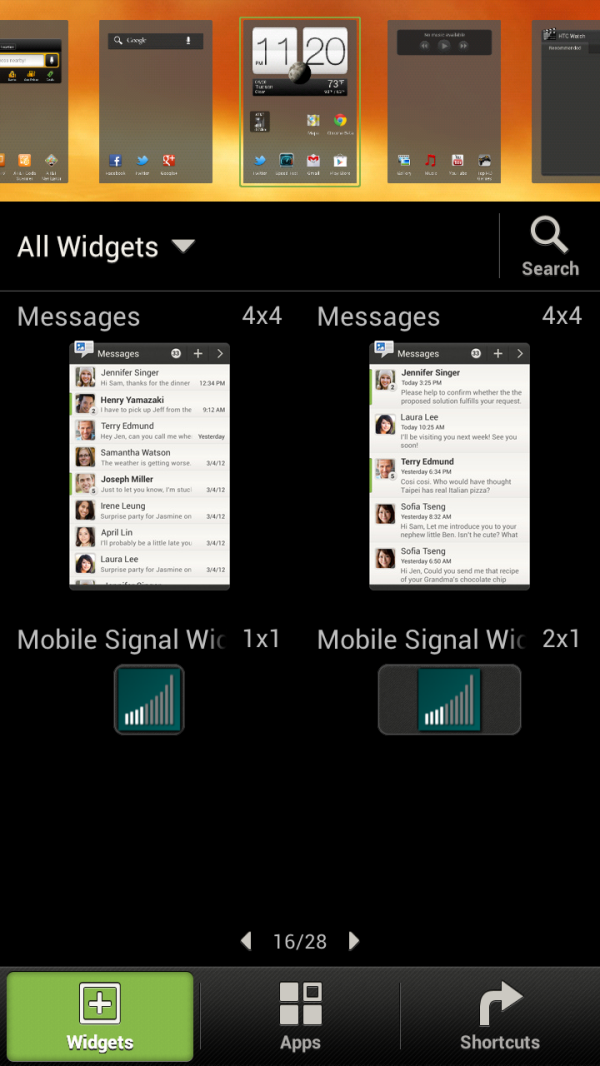

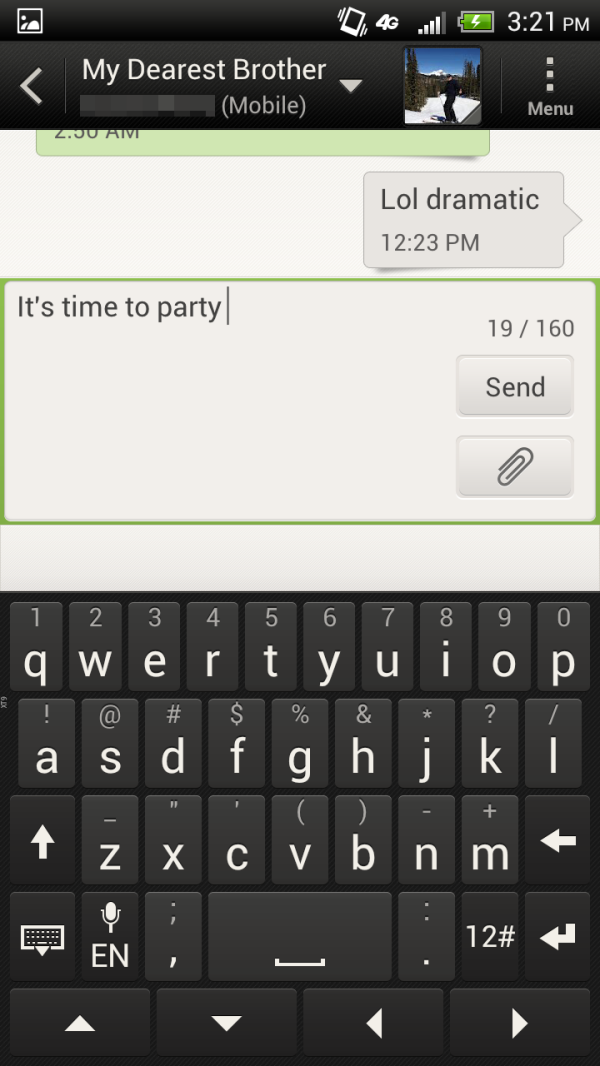


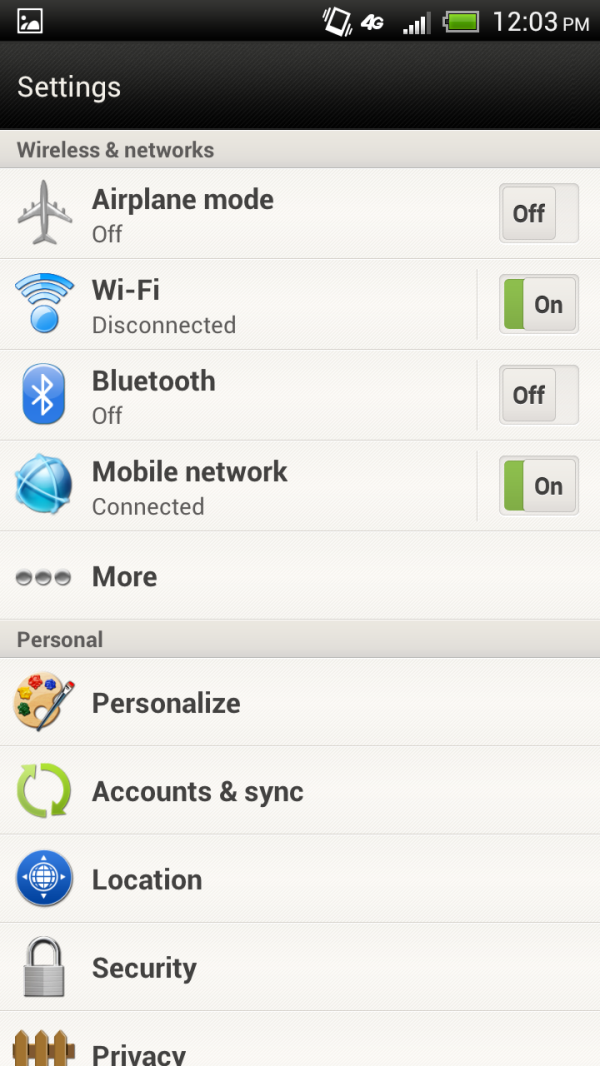
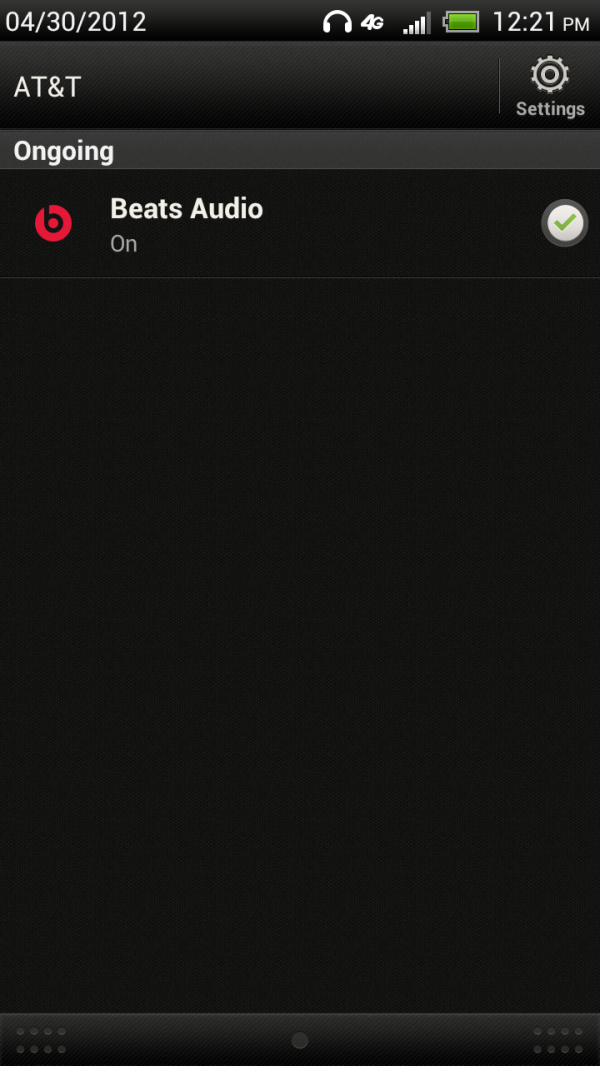








137 Comments
View All Comments
snoozemode - Tuesday, May 1, 2012 - link
The RGBW in the Atrix is still bad though except for battery performance which is better because of more light coming through.snoozemode - Tuesday, May 1, 2012 - link
Would be interesting to see battery performance on gps usage, especially on the 8260A and 8960let where the gps is 28nmthat on-die.OCedHrt - Tuesday, May 1, 2012 - link
Does the best wifi performance not affect battery life? I noticed the One X does have worse battery life on wifi.sprockkets - Tuesday, May 1, 2012 - link
I don't know but with it checked on an HTC sensation the battery never charged up and that was on the 1amp charger with the phone. Weird. (this was done on the latest Android Revolution firmware for ICS on the sensation.)OCedHrt - Tuesday, May 1, 2012 - link
Don't they have the same processor w/o the LTE baseband?3DoubleD - Tuesday, May 1, 2012 - link
I know this is less important that the other battery life tests you've done, but it would be interesting if you could include some sort of idle power drain test. For one, it would be interesting to see how the Tegra 3 would compare to the S4 here, since the Tegra 3 has the low power companion core for idle tasks.Also, you included a color accuracy chart it your iPad3 review, could that be added to the display reviews. It's much easier to interpret than looking at the CIE diagram.
Thanks for the great review... I'm pretty tempted to buy a white One X after this. I've been impatiently waiting and refreshing Anandtech for weeks now for this review!
NeoteriX - Wednesday, May 2, 2012 - link
The 40nm LP process used for the companion core may be a bit of a gimmick compared to the next generation smaller process fabs. In other words, it's clear that the 40nm LP process cuts down on consumption compared to the 40nm general process (so, compared with the Tegra 2 which is two cores at 40nm general process, there is battery savings).However, it could very well be (and is likely) that even the 40nm LP process cannot compete with the 28nm fabrication process used in the Snapdragon S4.
It would be interesting to see, but my bet would be that the S4 wins even on idle.
fm123 - Thursday, May 3, 2012 - link
The only thing similar is the phone talk time battery life. Since the Krait has an advantage of 3G/4G integration and die size, the talk function largely removes 3G/4G function from the test (which Tegra does not have integrated), and the talk function itself is not too intensive.Stormkroe - Tuesday, May 1, 2012 - link
I'd like to think that my incessant whining in the mobile forums are responsible for Exynos missing from the glbenchmark charts :) Broken scores, I tell ya!!!PLEASE, as a favor to us old 2011 phone owners, re-review phones like the Sensation and Galaxy S2 now that they've gotten ICS.
RamarC - Tuesday, May 1, 2012 - link
battery life vs capacity is useless if the end user can't replace/expand the battery. it doesn't matter if phone A lasts 7 hours with a smaller battery but phone B lasts 9 hours with a bigger battery. if both batteries are fixed, phone B lasts longer, period. now maybe an overall comparison of phone A vs B with all benchies summarized would be good, but even then cost on the same carrier would need to be considered .